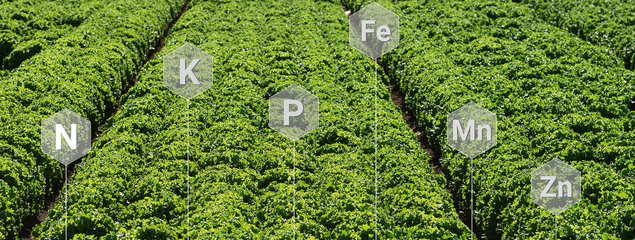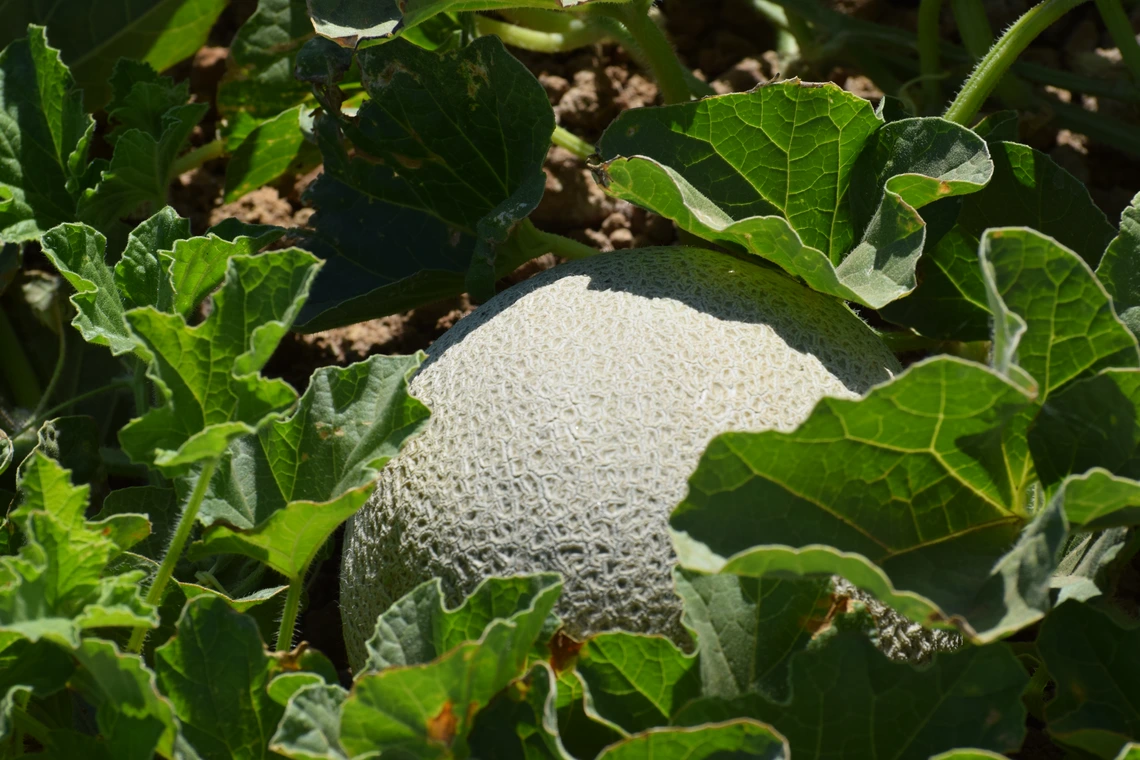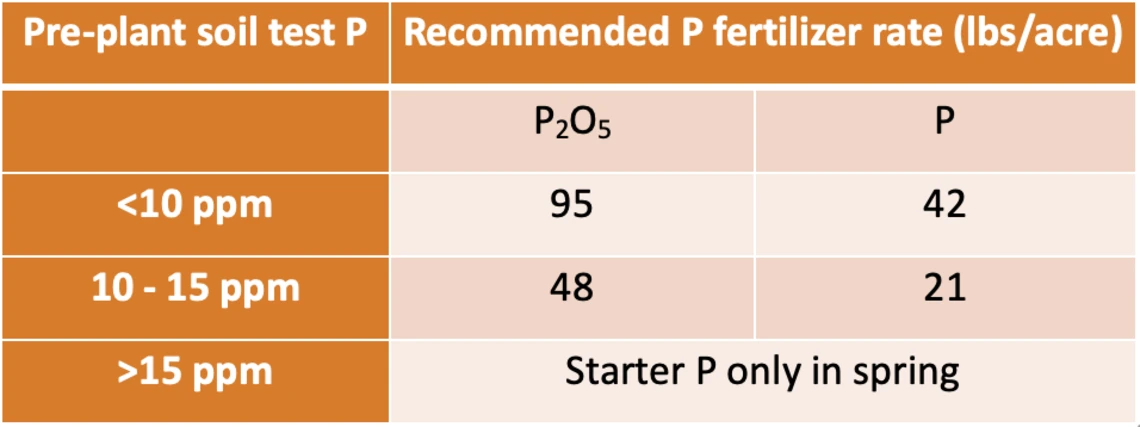
Improve Plant Nutrition
Fertilizer Guidelines for Vegetable Crops in Arizona
Crop Fertilizer Guidelines (3)
Cantaloupes and Watermelons (3.11)
Modest acreages of cantaloupe and small acreages of watermelons are grown in Arizona (Figures 3-11-1 and 3-11-2). Cantaloupes are typically produced in the spring, but a few plantings occur in the fall growing season. Watermelons are mainly produced in the spring and early summer months. Cantaloupe crops in Arizona typically accumulate 90-100 lbs N/acre in above ground biomass, and nitrogen (N) removed from the harvested crop is typically less than 60 lbs/acre (7, 14, 87). Watermelons accumulate 90-120 lbs N/acre, and N removed from the harvested crop is typically less than 70 lbs of N/acre (7,14).
Under efficient irrigation management, seasonal N fertilizer requirements of these crops are typically less than 175 lbs N/acre depending on soil test nitrate-N levels. Melons may require a pre-plant application of N fertilizer when pre-plant soil tests are less than 10 ppm nitrate-N. The N applied with MAP, a pre-plant P source, may account for some of the pre-plant N requirements, but a separate application of a granular N source, such as urea, could be required to bring the total pre-plant N application up to 40 lbs of N/acre.
All watermelons and an increasing proportion of cantaloupes are irrigated with subsurface drip irrigation systems in Arizona. Soluble N fertilizers are applied through fertigation, and discussion on fertigation management is presented in section 4.4. However, some cantaloupe acreages are still irrigated with furrow irrigation, and for these crops, side-dress N placement remains the primary in-season N application method. Usually, melons receive N application during cultivation before the vines produce runners that are more than 2-4 inches long. Nitrogen application is required if the soil nitrate-N test level is less than a lower threshold of 30 ppm and the rate of application is calculated as the difference between the lower threshold of soil nitrate-N level and the measured soil test nitrate-N level. Application of approximately 4 lbs of N/acre is needed to increase the soil test nitrate-N level by 1 ppm.
The warm season vegetable crops can utilize soil phosphorous (P) more efficiently than the cool season vegetables, and rates of P fertilizer required for maximum production are relatively small (Table 3-1-1). Melons planted in the spring often benefit from a starter P fertilizer as well, regardless of soil test P levels.
Background levels of soil K are currently sufficient for optimal melon production in Arizona. However, periodic soil testing is recommended to ensure that soil K levels are greater than 100 ppm AA K (Section 2.3). In addition, tissue tests need to be made occasionally to make sure that leaf K concentrations exceed 2.5% for cantaloupes and 3% for watermelons. Furthermore, leaf tissue Zn concentrations need to be maintained at or above 30 ppm for both crops (Section 4.3).
The only micronutrient that may occasionally need to be applied for melon production in Arizona is zinc (Zn). The Zn fertilizer guidelines, developed based on DPTA soil tests, are summarized in section 2.5 for all vegetable crops, including cantaloupe and melons. In addition, leaf tissue Zn concentrations need to be maintained at or above 20 ppm for both crops (Section 4.3).

Figure 3-11-1
Cantaloupe near Yuma.

Figure 3-11-2
Watermelons in a field in Central Arizona.

Table 3-11-1
Melon P fertilizer guidelines by pre-plant Olsen P soil test.

